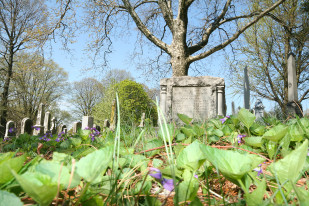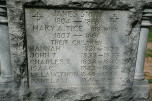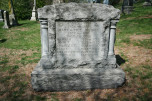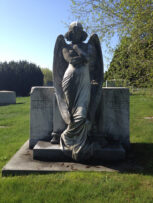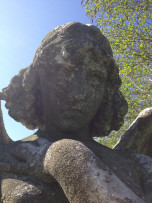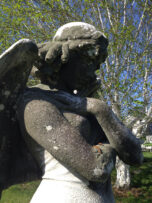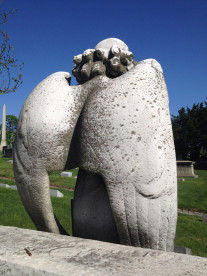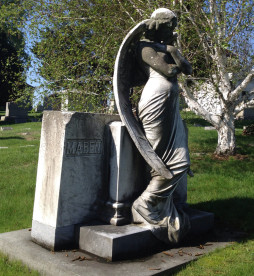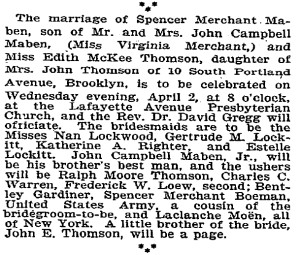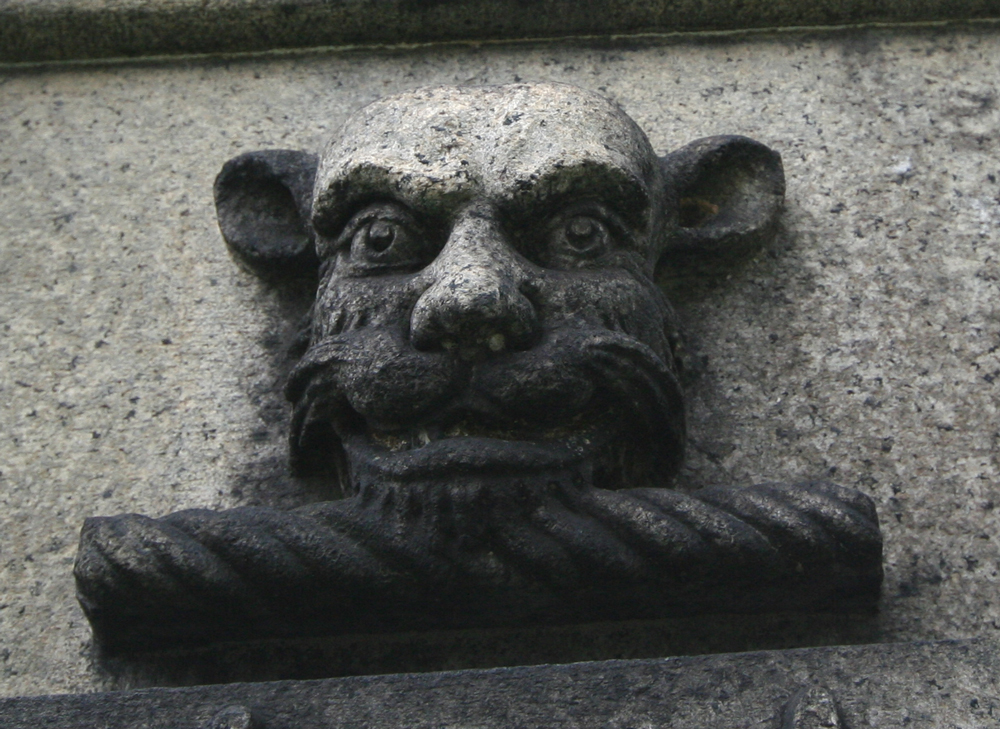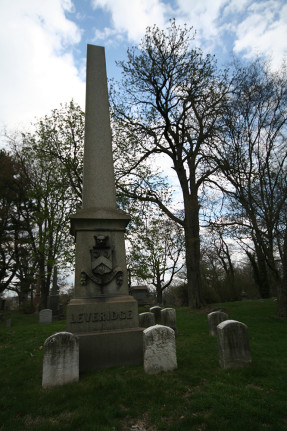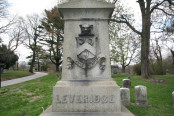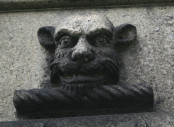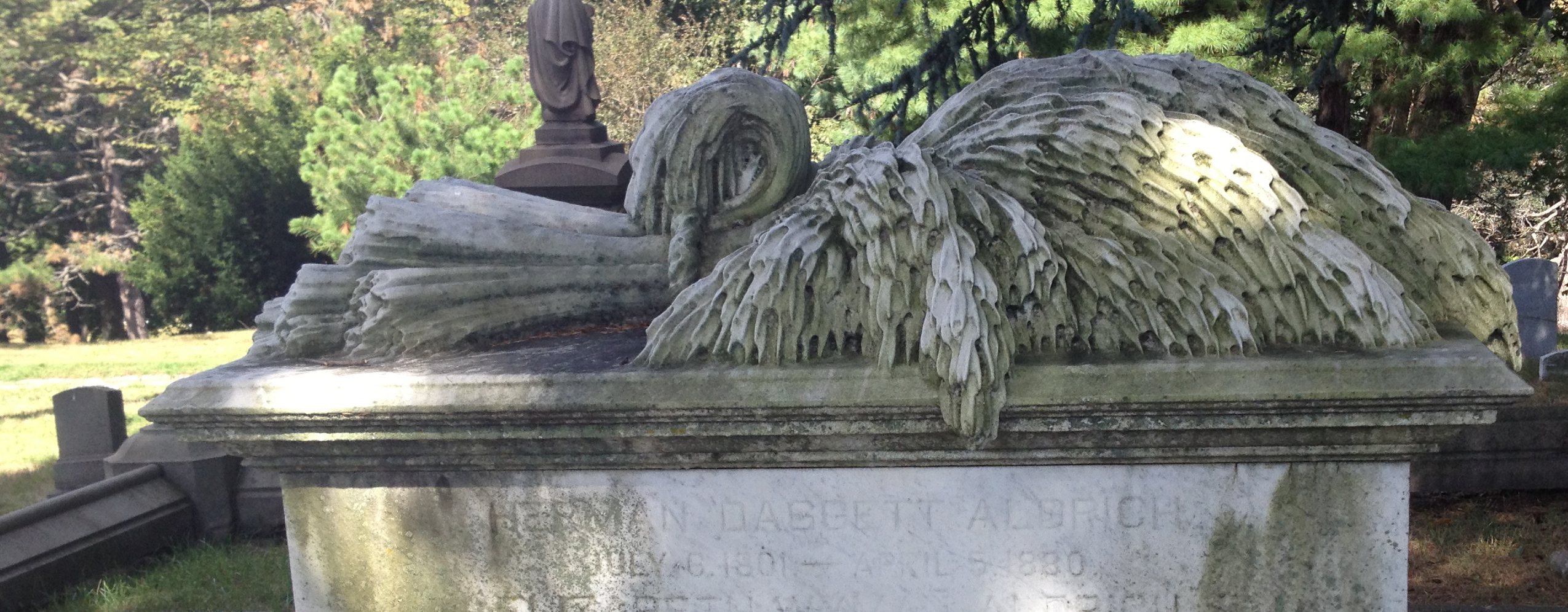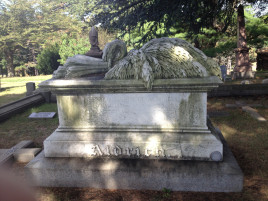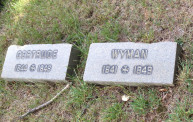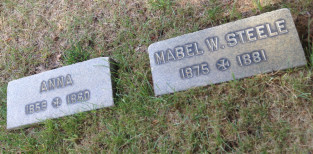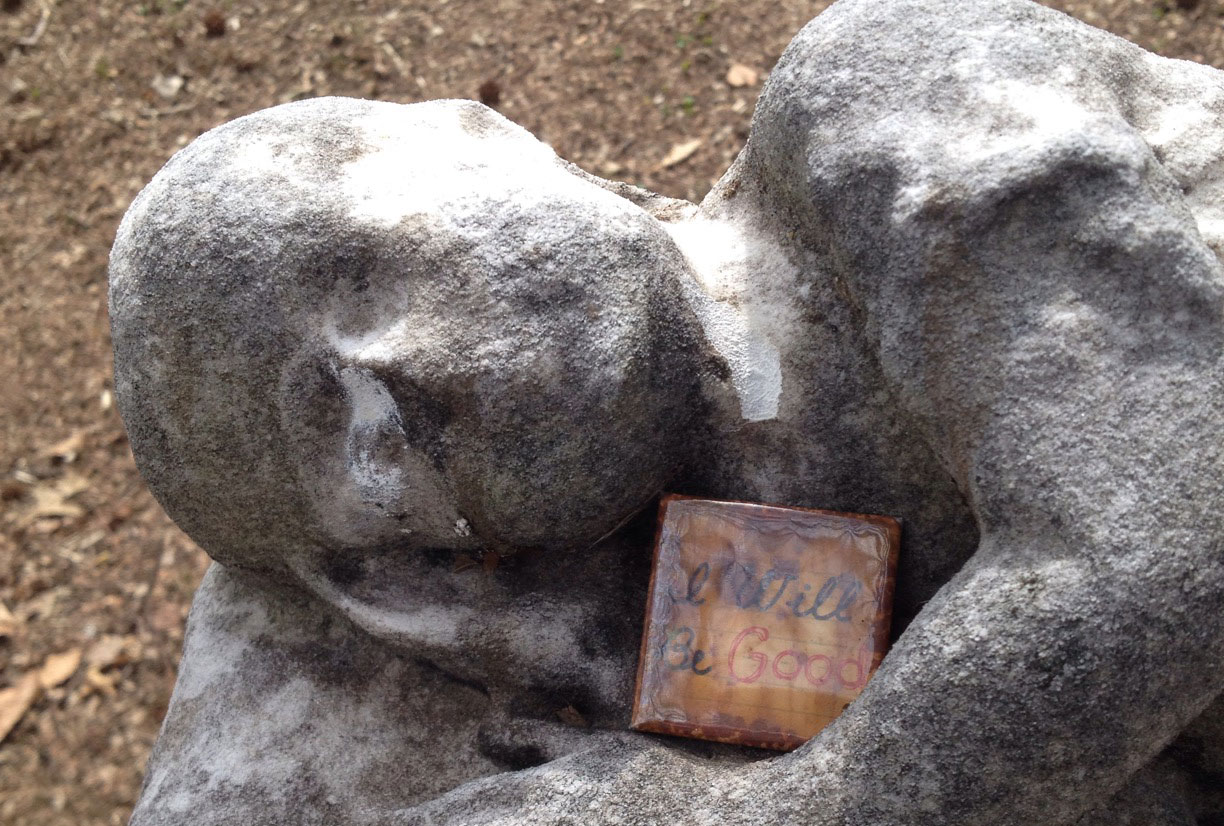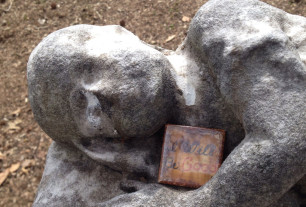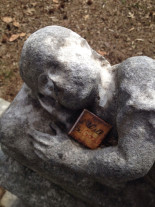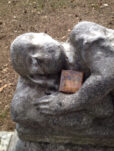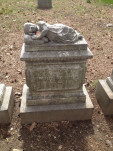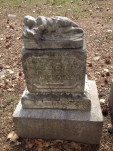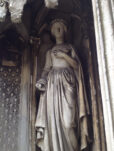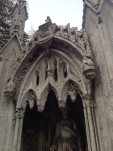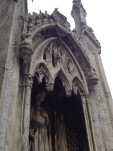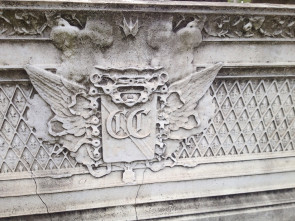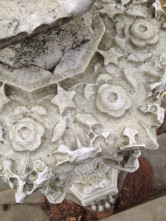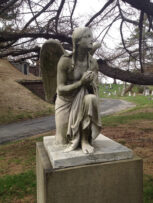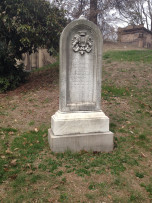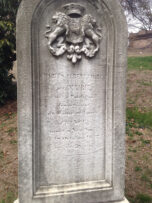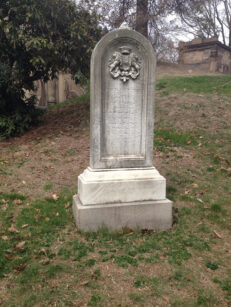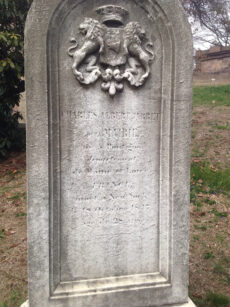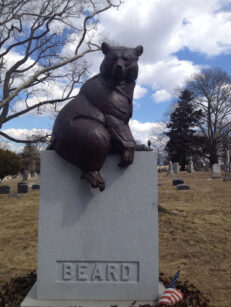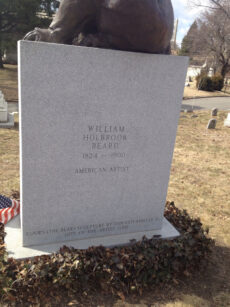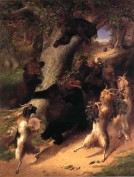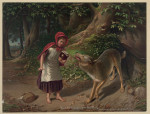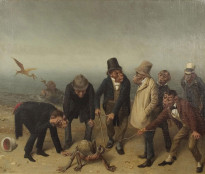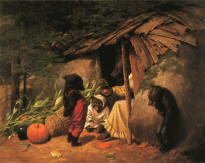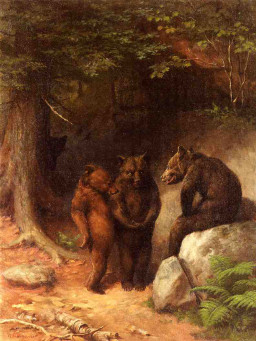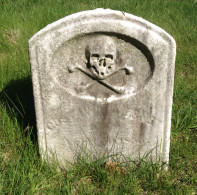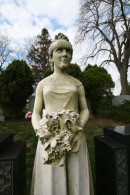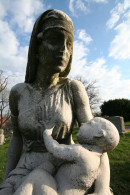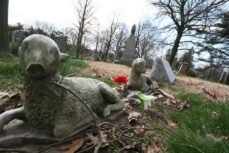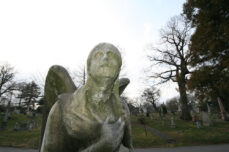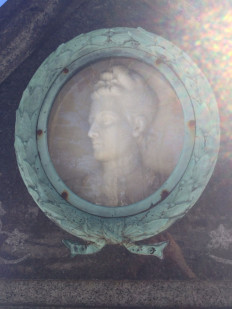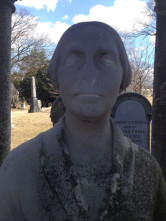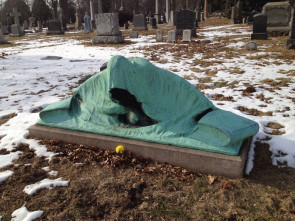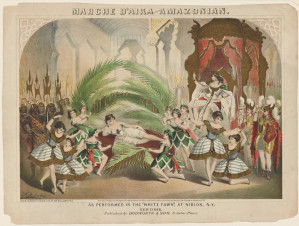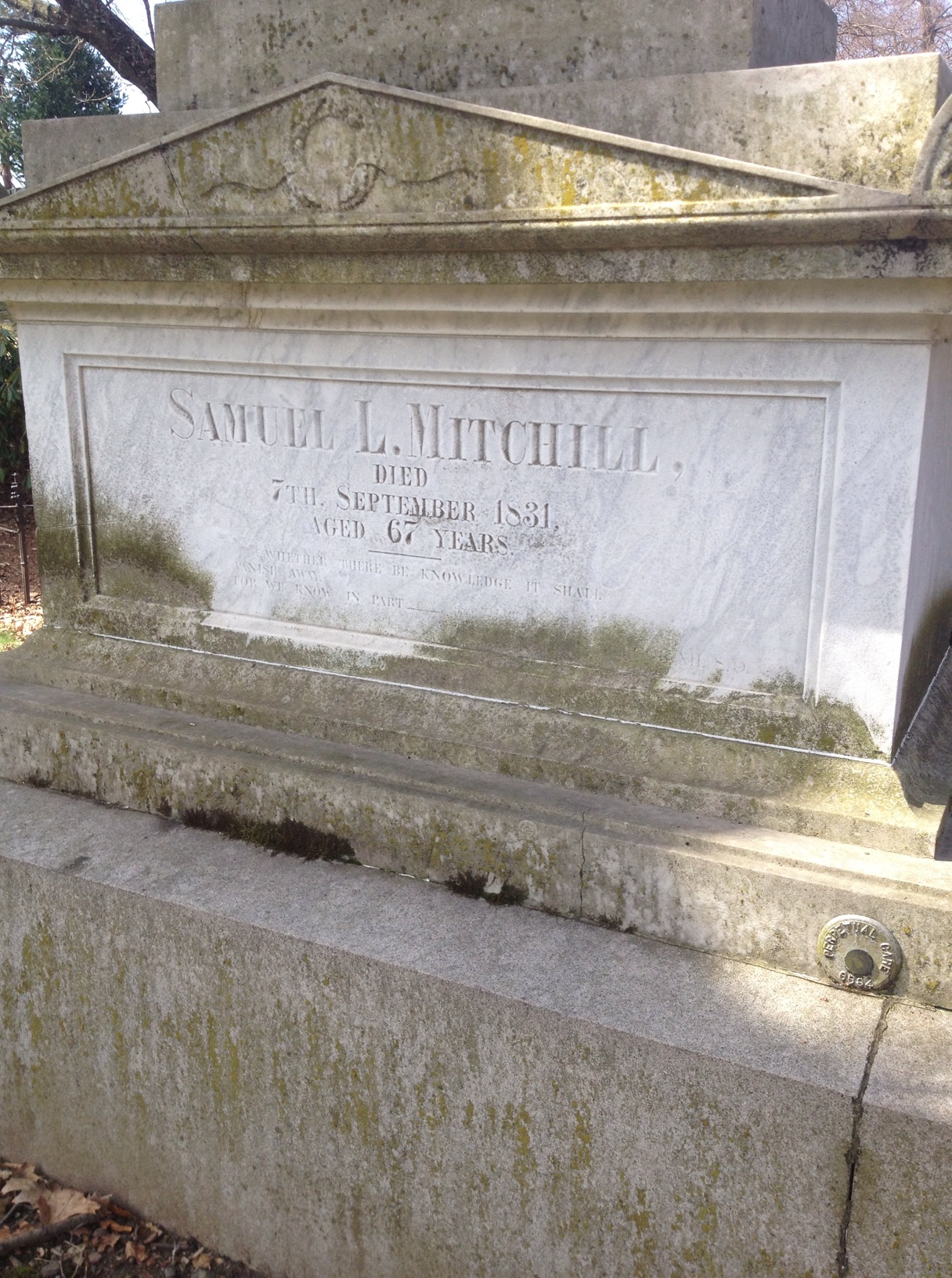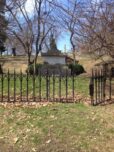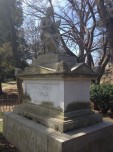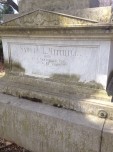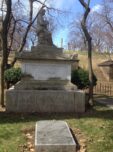And here I thought the Aldrich family plot was one of the saddest things I’ve seen. This poor family had six children, most of whom died before the age of three. Only one of their children, Pamela, made it past that–and she died at the age of nine. The parents themselves didn’t even really live to be that old. It’s just sad.
All posts by LostTosight
John Campbell Maben
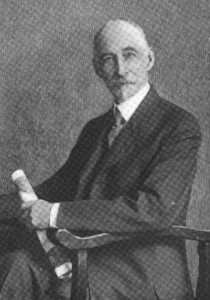 John Campbell Maben (1839-1926) was born into a wealthy Richmond, Virginia family. His father was a tobacco and cotton merchant, and he grew up on a bucolic estate called “Strawberry Hill”. (I wonder if they had slaves? SURELY they had slaves.) Educated in the finest private schools, Maben dropped out of Princeton just shy of graduation to enlist in the Confederate Army during the Civil War. He served in the Twelfth Virginia Regiment, where he was eventually commissioned as a captain.
John Campbell Maben (1839-1926) was born into a wealthy Richmond, Virginia family. His father was a tobacco and cotton merchant, and he grew up on a bucolic estate called “Strawberry Hill”. (I wonder if they had slaves? SURELY they had slaves.) Educated in the finest private schools, Maben dropped out of Princeton just shy of graduation to enlist in the Confederate Army during the Civil War. He served in the Twelfth Virginia Regiment, where he was eventually commissioned as a captain.
After the war, he moved to New York where he worked on Wall Street as a high-finance banker. When his firm failed during the financial panic of 1873, he set about to start his own company. Maben was the first director of the “Terminal Company”, which eventually became the Southern Railway.
Later in life, he was the president of the Sloss-Sheffield Steel and Iron Company, where he was a huge proponent of the notorious “convict lease system” in their coal mines.
From the Encyclopedia of Alabama:
Between 1875 and 1928, the state and counties of Alabama profited from a form of prison labor known as the convict-lease system. Under this system, companies and individuals paid fees to state and county governments in exchange for the labor of prisoners on farms, at lumberyards, and in coal mines. Following their convictions, prisoners were transported directly to the work site and remained there for the duration of their sentences.
His son Spencer Merchant Maben is one of the few stones I noticed around the plot. I found this little tidbit about his society marriage from the “What’s Going On In Society” column of the February 5, 1902 NY Times:
John William Chase Leveridge
“At the time of his death he was the oldest lawyer in New York City, and possibly the oldest resident in NYC according to his NY Times obituary. His home was at 141 East 41th Street. He served as a Pvt. in the War of 1812 and was later appointed Corporate Council under Mayor Harper in 1840. In his early days he was one of the most influential lawyers in this city. He was said to remember distinctly the funeral of George Washington as he stood at the corner of Broadway and Vessey Streets in front of St. Paul’s Church. He was one of the founding members of the St. Nicholas Club. He attributed his longevity (he lived to 94) to a strong constitution, temeperance, and activity.”
The St. Nicholas Society, founded by Washington Irving, Mr. Leveridge, and other prominent rich-folk types in 1835, is still around today. Their mission is to preserve the Dutch history and heritage of New York City. It’s a very exclusive crowd; according to their web site, “Membership is by invitation only and limited to those men who can demonstrate descent from a resident of New York State before 1785.”
I just like the little demon head on the monument.
Herman & Elizabeth Aldrich
Lined up behind Herman and Elizabeth Aldrich’s grave are stones for six children:
Gertrude, 1844-1848: 4 years old
Wyman, 1841-1849: 8 years old
Anna, 1859-1860: 1 year old
Mabel, 1875-1881: 6 years old
Emily, 1880-1881: 1 year old
Ella, 1886-1886: infant
I tried looking up anything about this family, but came up empty-handed. All I could think was, those poor people. How sad it must have been in their home.
I Will Be Good
I was walking down the hill from the Pierrepont plot, and found this.
It’s a plot for a family named Simonson, and there are two children’s graves behind it–one for “Baby John” and one for “Emily Louise”. Someone (or a ghost, or possibly the Blair Witch) has placed a button or an old-fashioned mirror in the crook of Emily Louise’s neck that reads, “I Will Be Good”. It looks like it’s been there a while, and it kind of looks antique-y. I didn’t dare touch it, so I don’t know exactly what it is, but I do know it’s creepy.
I Googled the name George H. Simonson, but couldn’t find anything…
Charlotte Canda
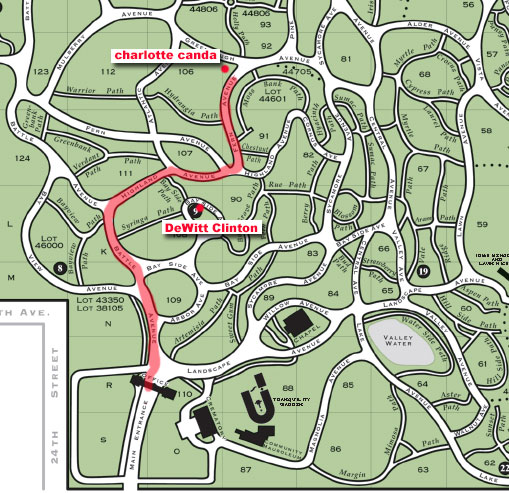 I’ve visited this site several times, and have always been amazed. It’s so huge and ornate, and there’s so much to look at. No amount of picture-taking ever seems to do it justice. Who in the world would deserve such a 3-ring circus of a monument?
I’ve visited this site several times, and have always been amazed. It’s so huge and ornate, and there’s so much to look at. No amount of picture-taking ever seems to do it justice. Who in the world would deserve such a 3-ring circus of a monument?
According to Wikipedia:
Charlotte Canda (February 3, 1828 – February 3, 1845), sometimes referred to simply as “Miss Canda”, was a young debutante who died in a horse carriage accident on the way home from her seventeenth birthday party in New York City. She is memorialized by a Victorian mausoleum in Green-Wood Cemetery, Brooklyn, New York by Robert Launitz and John Frazee. The ornately and expensively decorated monument attracted thousands of visitors to Green-Wood Cemetery in the late 19th century.
This story is even better on the Green-Wood Cemetery Web site. Apparently she was sketching out some elaborate plans for the gravesite for her aunt when she died, so her father went ahead and used them for her grave, adding her initials and a bunch of other personal touches, like figures of her pet parrots. There’s a life-sized statue of her, and she is adorned with 17 roses around her head, one for each year of her life.
She was engaged to a Frenchman named Charles Jarret at the time of her death. He was so grief-stricken that he committed suicide a year later. Sheesh! OK, you win, Charlotte Canda. You do deserve such a dramatic monument.
UPDATE: After reading all this, I visited again. I couldn’t find any parrots in the monument(as described on the Green-Wood web site), but I did find the fiancé’s grave. It is right next to hers.
William Holbrook Beard
William Holbrook Beard was a 19th Century artist whose work mostly involves animals acting like humans. In particular, he is known for his paintings of bears–which explains this monument.
I had never heard of Beard before. I don’t know why he is not more well-known. These paintings are insane. I am going to have to buy a book of his work–I could look at these forever.
 From the National Museum of Wildlife Art’s site:
From the National Museum of Wildlife Art’s site:
Beard became an immensely popular animal painter, and he painted a large variety of animals, favoring rabbits, cats, monkeys, squirrels, and especially bears. Both lauded and criticized for his humorous satires, he often substituted animals for humans in his visual social commentary. He represented the condition of man and universal concerns by painting allegorical and fantasy subjects. He also produced work drawn from high and low literature, depicting characteristics of jealousy, pride, drunkenness, and greed.
Beard, an Ohio native, studied in Italy, Germany, and Switzerland before moving to New York City in 1857. He opened a studio in what was known as the Tenth Street Studio Building–this was one of the first all-artist studio buildings in New York City, and was instrumental in making Greenwich Village the center of the NYC art world for pretty much the next century. William Merritt Chase and Winslow Homer also had studios in that building.
He wrote a book called “Humor in Animals” in 1885.
The bear sculpture is by Dan Ostermiller, a renowned American sculptor, and recent president of the National Sculpture Society. Ostermiller does a lot of sculptures of bears and other wildlife, making him the perfect choice for this monument.
This is Creepy, Part 1
Harvey B. Dodworth
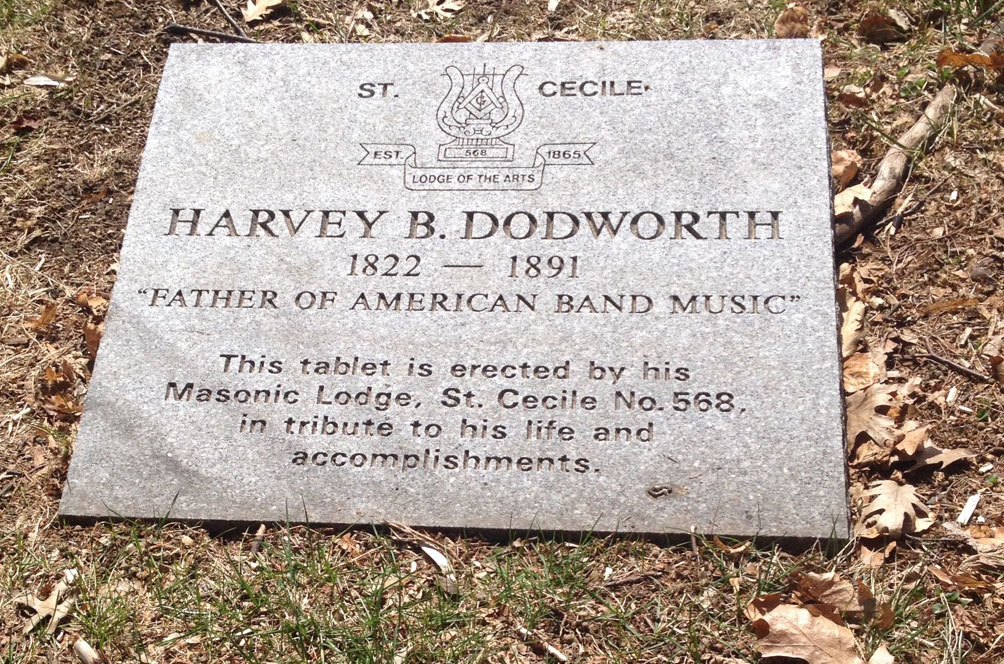
From the Brooklyn Daily Eagle, January 26, 1891:
Harvey B. Dodworth, the famous band master, died at his home, 22 Hill street, West Hoboken, Saturday, at the age of 68. He was born in Sheffield, England, and came to America when very young. His father was a band master before him, and was the organizer of the New York city band, which became famous. Harvey B. Dodworth played the piccolo in the orchestra of the old Park theater in New York when he was only 10 years of age. Years after he was leader of the orchestra at Niblo’s theater,and subsequently at Daly’s. The fame of his Dodworth band was well known in Brooklyn. The deceased was the first man in this country to arrange Wagner’s music for military bands. He leaves a wife and three sons.
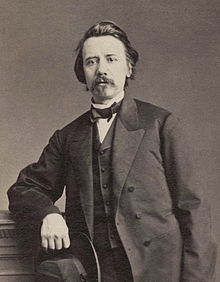
And according to Wikipedia, he “conducted with a band of sixty musicians in between salutes and boxing matches, as well as opening in Madison Square Garden, in which he had plans to lease in 1879 to turn it into a “music garden”, where he would conduct a 123-piece band.”
Here are a couple of playbills (posters?) for his performances:
Samuel L. Mitchell
Stumbled across this one today. I figured it had to be someone somewhat important because it still had the iron fence around it. Most of the cast-iron fences in the cemetery were removed and used for scrap metal during the war.
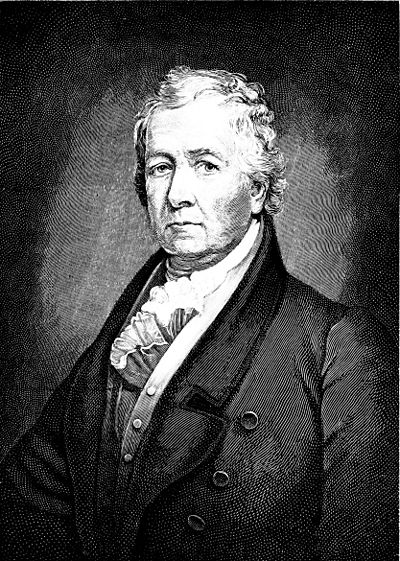
I got home and Googled Samuel L Mitchell, and found that he was quite a big deal: he was a senator in the early 1800’s, and good buddies with New York governor DeWitt Clinton. Mitchell and Clinton were both instrumental in the building of the Erie Canal.


